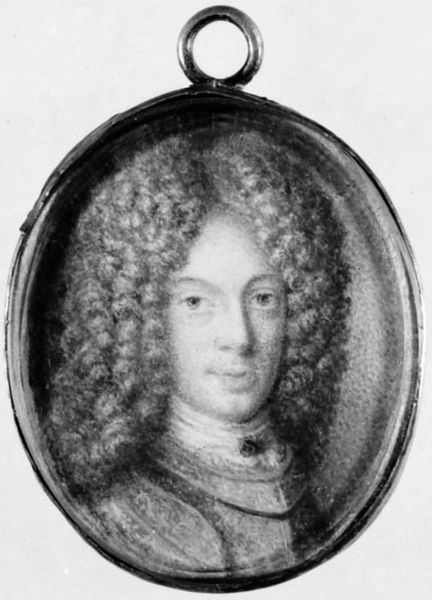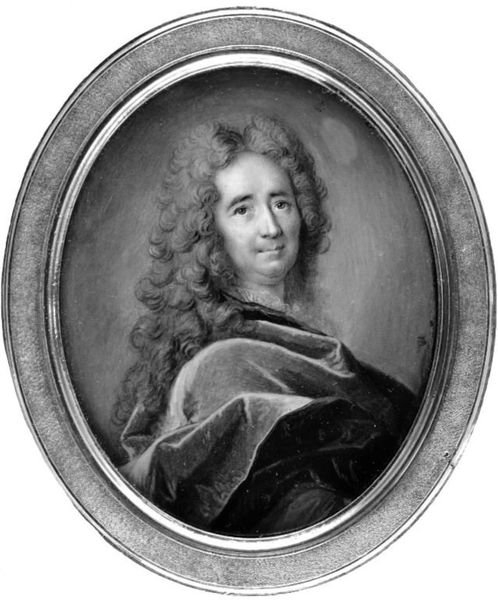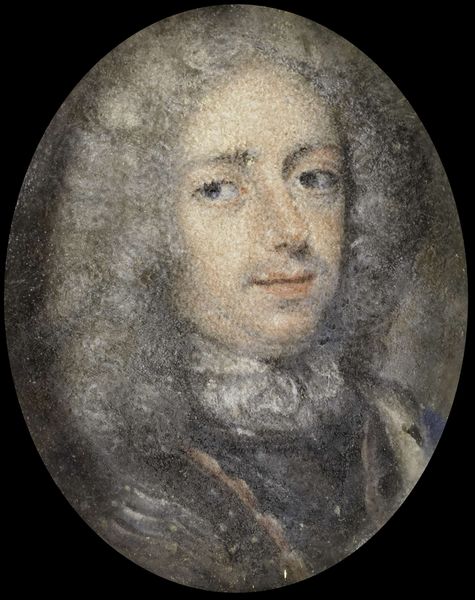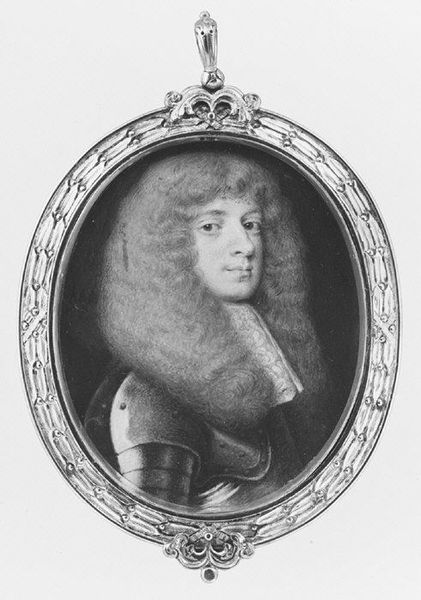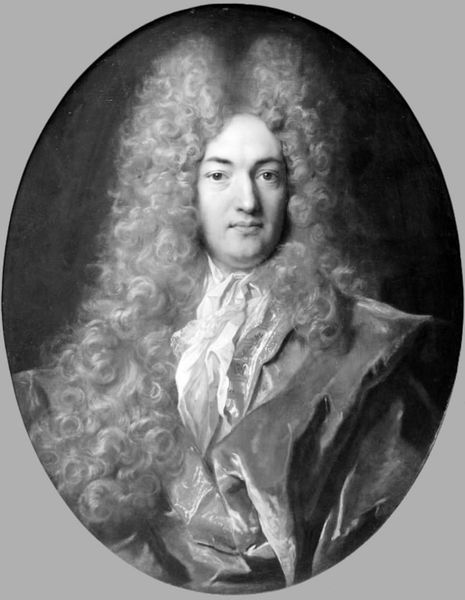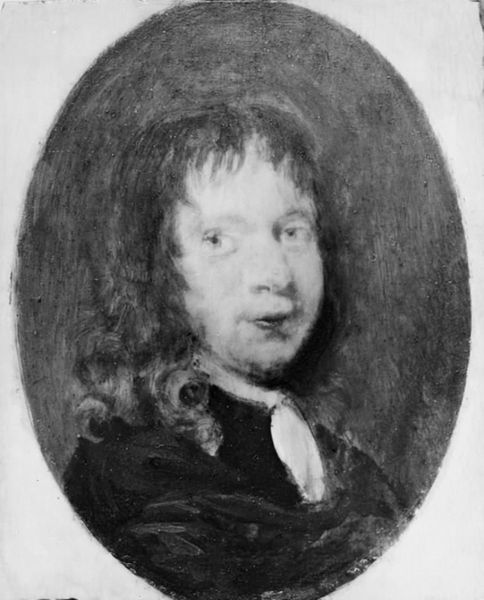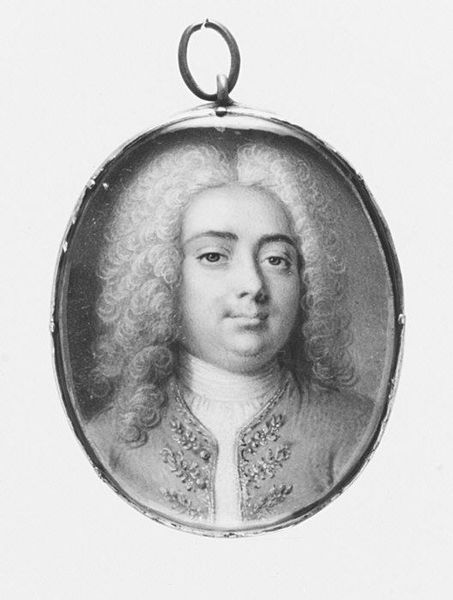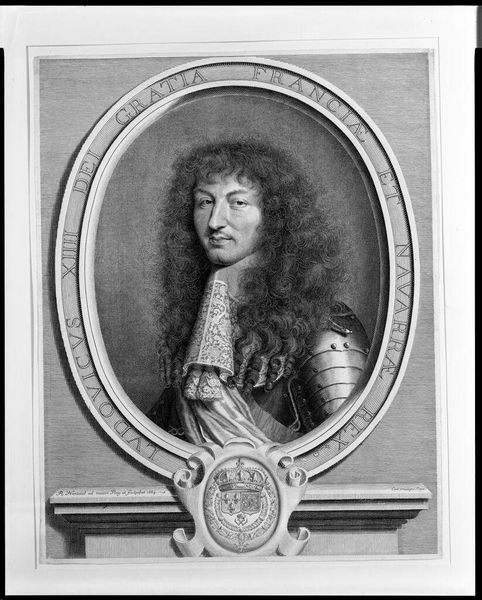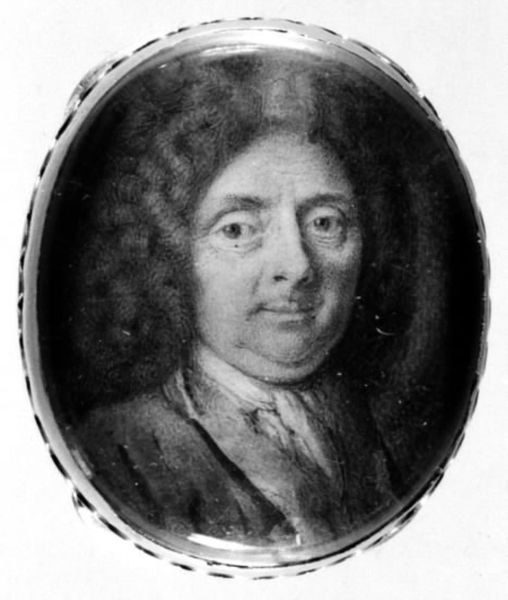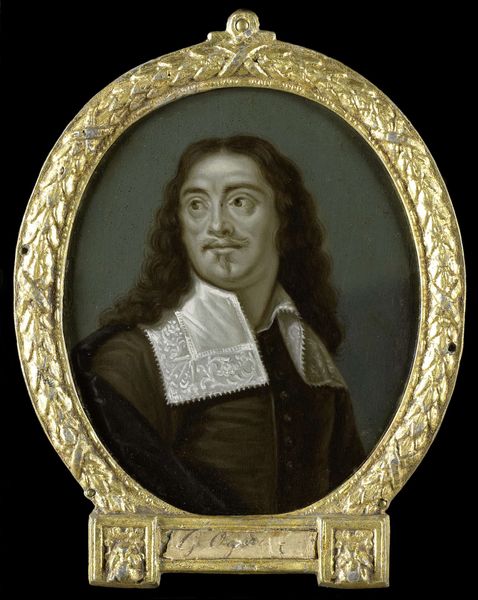
Portrait of a Young Gentleman wearing a full-bottomed wig 17th century
0:00
0:00
painting
#
portrait
#
baroque
#
painting
#
black and white theme
#
black and white
#
miniature
Dimensions: 5.1 cm (height) x 4.2 cm (width) (Netto)
Curator: Hmm, a little haunted, perhaps? This tiny portrait throws a whole lot of melancholic grace. Editor: Indeed! Here at the SMK, we have an oil on copper miniature dating from the 17th century simply titled “Portrait of a Young Gentleman Wearing a Full-Bottomed Wig.” Curator: That title. "Full-bottomed wig" as the main descriptor, even over the 'young gentleman' bit? Seems about right for the period! The wig does almost steal the show—a waterfall of controlled curls surrounding this very composed face. Makes you wonder what he was really thinking. Editor: The full-bottomed wig was indeed a potent symbol, signaling status and adherence to the codes of aristocracy during that time. This portrait encapsulates Baroque aesthetics but also speaks to issues of identity construction. Think of how performance and adornment became so crucial for navigating the social stage. Curator: It is a fascinating dance, isn't it? Between presentation and reality. All the signifiers of wealth and power perfectly in place, but there’s still this whisper of something vulnerable in the eyes. I always get a kick out of how the really grand styles leave little room for personal expression. It's almost comical when you consider how rigid that world had become. Editor: Absolutely. Consider, too, the binary of "masculine" performance being reinforced through sartorial excess – a sharp contrast to later, supposedly 'modern' conceptions of masculinity linked to austerity and simplicity. Curator: Oh, modernity and its baggage! Well, thanks to this young gentleman for offering up more than a glimpse through his gorgeous Baroque layers. It makes you ponder, doesn't it, all that’s veiled and all that's staged within even the most tightly framed image. Editor: A sentiment I wholeheartedly share. It allows us to consider how even apparent 'candor' is laden with layers of political intentionality and how historical modes of portraiture inform how we engage with constructed realities today.
Comments
No comments
Be the first to comment and join the conversation on the ultimate creative platform.
